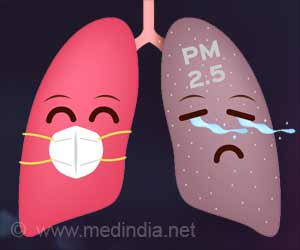Almost half of the world's population are exposed to increased levels of air pollution despite the global efforts to improve air quality, finds a new study.

TOP INSIGHT
Air pollution constitutes a major, and in many areas increasing threat to public health.
Read More..
Major sources of fine particulate matter air pollution include the inefficient use of energy by households, industry, the agriculture and transport sectors, and coal-fired power plants. In some regions, sand and desert dust, waste burning and deforestation are additional sources of air pollution.
Although air pollution affects high and low-income countries alike, low- and middle-income countries experience the highest-burden, with the highest concentrations seen in Central, Eastern Southern and South-Eastern Asia.
For the study, the research team examined trends in global air quality between 2010 and 2016, against a backdrop of global efforts to reduce air pollution, both through short and long term policies.
The team used ground monitoring data together with information from satellite retrievals of aerosol optical depth, chemical transport models and other sources to provide yearly air quality profiles for individual countries, regions and globally.
Professor Shaddick added: "Although precise quantification of the outcomes of specific policies is difficult, coupling the evidence for effective interventions with global, regional and local trends in air pollution can provide essential information for the evidence base that is key in informing and monitoring future policies."
 MEDINDIA
MEDINDIA




 Email
Email




